Related Research Articles
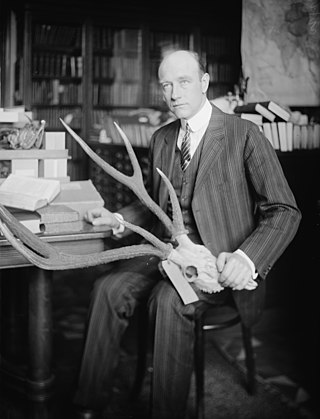
Roy Chapman Andrews was an American explorer, adventurer and naturalist who became the director of the American Museum of Natural History. He led a series of expeditions through the politically disturbed China of the early 20th century into the Gobi Desert and Mongolia. The expeditions made important discoveries and brought the first-known fossil dinosaur eggs to the museum. Chapman's popular writing about his adventures made him famous.

The Mohawk River is a 149-mile-long (240 km) river in the U.S. state of New York. It is the largest tributary of the Hudson River. The Mohawk flows into the Hudson in Cohoes, New York, a few miles north of the state capital of Albany. The river is named for the Mohawk Nation of the Iroquois Confederacy. A major waterway, in the early 19th century, the river's east-west valley provided the setting and water for development of the Erie Canal, as a key to developing New York. The largest tributary, the Schoharie Creek, accounts for over one quarter (26.83%) of the Mohawk River's watershed. Another main tributary is the West Canada Creek, which makes up for 16.33% of the Mohawk's watershed.
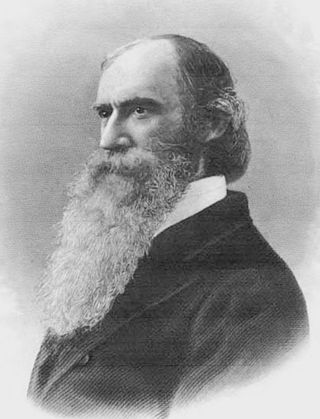
John Strong Newberry was an American physician, geologist and paleontologist. He participated as a naturalist and surgeon on three expeditions to explore and survey the western United States. During the Civil War he served in the US Sanitary Commission and was appointed secretary of the western department of the commission. After the war he became professor of geology and paleontology at Columbia University School of Mines and chief geologist of the Geological Survey of Ohio.
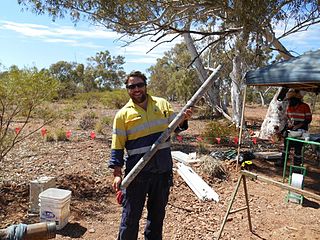
Engineering geology is the application of geology to engineering study for the purpose of assuring that the geological factors regarding the location, design, construction, operation and maintenance of engineering works are recognized and accounted for. Engineering geologists provide geological and geotechnical recommendations, analysis, and design associated with human development and various types of structures. The realm of the engineering geologist is essentially in the area of earth-structure interactions, or investigation of how the earth or earth processes impact human made structures and human activities.
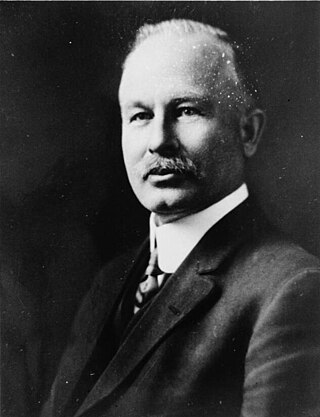
John Samuel Eastwood was an American engineer who built the world's first reinforced concrete multiple-arch dam on bedrock foundation at Hume Lake, California, in 1908, and was one of California's pioneers of hydroelectric power production. Eastwood's papers are held at the Water Resources Collections and Archives, University of California, Riverside.

Ferdinand Vandeveer Hayden was an American geologist noted for his pioneering surveying expeditions of the Rocky Mountains in the late 19th century. He was also a physician who served with the Union Army during the Civil War.

Newton Horace Winchell was an American geologist chiefly notable for his six-volume work The Geology of Minnesota: Final Report of the Geological and Natural History Survey of Minnesota, which was prepared by Winchell and his assistants. A bibliography of his publications by Warren Upham in the Bulletin of the Geological Society of America contains almost 300 titles.

The New Croton Dam is a dam forming the New Croton Reservoir, both parts of the New York City water supply system. It stretches across the Croton River near Croton-on-Hudson, New York, about 22 miles (35 km) north of New York City.

Josiah Edward Spurr (1870–1950) was an American geologist, explorer, and author. Born in Gloucester, Massachusetts, he was considered something of a failure as a youth, unsuited for the family fishing business, since on a voyage he invariably became seasick. Since he could not be a productive fisherman like his brothers, his parents decided he might as well go to college. After working his way through Harvard, he began his career with the Minnesota Geological Survey, making the first-ever geological map of the great Mesabi Range in Minnesota.

Neversink Reservoir is a reservoir in the New York City water supply system. It is located in the Catskill Mountain town of Neversink in Sullivan County, New York, 75 miles (120.6 km) northwest of the City.

The Cannonsville Reservoir is a reservoir in the New York City water supply system in Delaware County, New York. It was formed by construction of the Cannonsville Dam on its west end, which impounded over half of the West Branch of the Delaware River. Lying on the western part of the Delaware Watershed, it is the westernmost of New York City's reservoirs. It was placed in service in 1964, and is the most recently constructed New York City-owned reservoir.

The Misquah Hills are a range of mountains in northeastern Minnesota, in the United States. They are located in or near the Boundary Waters Canoe Area Wilderness within Superior National Forest. Eagle Mountain, the highest point in Minnesota at 2,301 feet, is considered to be part of the Misquah Hills.
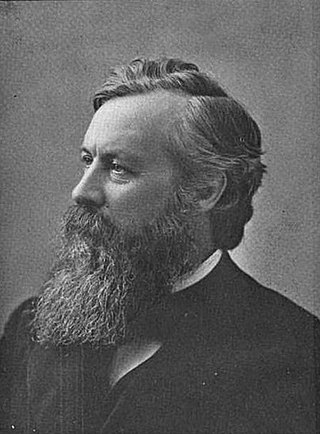
Alexander Winchell was a United States geologist who contributed to this field mainly as an educator and a popular lecturer and author. His views on evolution aroused controversy among his contemporaries; today the racism of these views is more cause for comment.
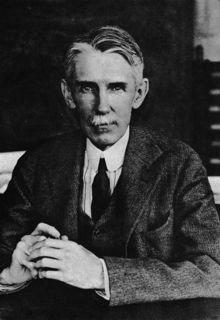
Charles Henry Smyth Jr. was an American geologist. Born to a prominent family in Upstate New York, he studied geology at Columbia University before becoming a professor of geology at Hamilton College and Princeton University. At Princeton he strengthened the Department of Geology's graduate program.

Dolmage and Mason Consulting Engineers was an engineering consultancy based in Vancouver. The company was founded by Dr. Victor Dolmage and Charles W. Mason in 1940 and was active until 1961.
Ernest Frederick "Fred" Roots was a Canadian geologist, polar explorer, educator and public servant. After graduating with undergraduate and master's degrees in geology from the University of British Columbia and a doctorate from Princeton University, Roots joined the Scott Polar Research Institute and was appointed Chief Geologist for the 1949 to 1952 Norwegian–British–Swedish Antarctic Expedition. During the expedition, in addition to ground-breaking geological and glaciological research studies, he made a 189-day, unsupported dog sled journey across the continent; a record that still stood at the time of his death over six decades later. On his return to Canada he joined the Geological Survey of Canada with whom he served as a field geologist until 1958, when he left to help found the Polar Continental Shelf Program. After 14 years with PCSP, Roots left to act as science advisor to the newly created federal Department of the Environment, where he remained on staff until 1989. After retirement, Roots remained an active participant in polar research, and also became a key mentor within the Students on Ice educational program. He continued to participate in expeditions for Students on Ice well into his tenth decade, his last being to Greenland only two months before his death.

Batavia Kill is a 21-mile-long (34 km) tributary of Schoharie Creek, that flows across the towns of Windham, Ashland and Prattsville in the U.S. state of New York. Its waters reach the Hudson River via Schoharie Creek and the Mohawk River. Since it drains into the Schoharie upstream of Schoharie Reservoir, it is part of the New York City water supply system. From the source to Maplecrest, Batavia Kill drains the northern slopes of the Blackhead Mountains, which include Thomas Cole Mountain, Black Dome, and Blackhead Mountain, the fourth-, third-, and fifth-highest peaks in the Catskills, respectively.
Alexander Newton Winchell was an American geologist who pioneered spectroscopic and X-ray crystallographic studies on minerals. He wrote an influential textbook, the Elements of optical mineralogy which went into several editions.
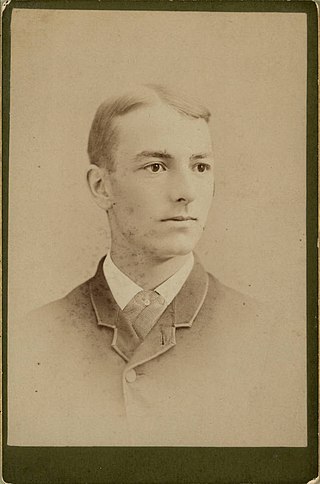
Horace Vaughn Winchell was an American geologist who specialized in mining geology. Unlike his father, geologist Newton Horace Winchell, he worked mainly in the industry. He edited the journal Economic Geology which he also helped in establishing.
References
- 1 2 3 4 "Charles P. Berkey Papers, 1884-1955". North Carolina State University Libraries.
- 1 2 3 4 5 6 Kerr, Paul F. (1957). "Charles Peter Berkey - A Biographical Memoir" (PDF). National Academy of Sciences.
- 1 2 3 4 "Dr. Charles P. Berkey, 88, Dies; Geologist, Water Supply Expert". The New York Times. August 24, 1955. p. 26.
- ↑ Berkey, Charles P.; Morris, Frederick K. (1927). Geology of Mongolia: a reconnaissance report based on the investigations of the years 1922-1923 (PDF). New York: The American Museum of Natural History.
- ↑ "APS Member History". search.amphilsoc.org. Retrieved 2023-07-25.